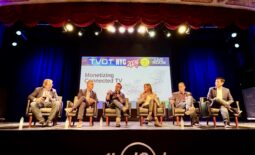The revivified Ad:Tech New York 2016 show featured a rollicking panel that the Producers Guild of America (PGA) produced on Thursday, November 3rd, Day 2 of the show, in which leading New York agency producers (all but one PGA members) discussed the trends that are shifting behaviors among brands and consumers alike.
Produced and moderated by Chris Pfaff, one of the founders of the PGA New Media Council, and head of consultancy Chris Pfaff Tech Media LLC, the panel, ‘Ad-Tech and Content Collide: Producing in the Programmatic Era,’ featured Jason Jercinovic, global head of marketing innovation and global brand director for Havas; Cindy Pound, executive direct, R/GA; Tom Goodwin, executive vice president, head of innovation, ZenithOptimedia, and Raoul Didisheim, consultant with Mariana Media.
A packed house filled the “Titan Hall” in the Javits Center, listening to a discussion that focused on various topics, including:
- AI and automation are dominating discussions among producers. How do we harness machine learning and real-time technologies for greater storytelling?
- “Conversational content” is now part of the lexicon. How are these devices and platforms – from Amazon Alexa to Cortana to Siri and Google Talk – part of the “targeted consumer?”
- Chatbots are the rage now; everyone’s mother seems to have a chatbot. Every VC is talking about chatbots. Is this another fad, like Pokemon Go, or are chatbots going to be a sustained part of the producer’s world?
- The luxury sector of the economy is still robust. The whole premise of the luxury relationship is to have a bespoke experience. How do you deliver that in an era of commoditized personalization?
- The “cognitive” era may be upon us, but can we deliver truly “real-time” experiences that swing with societal trends, fast-moving news, or even more granular data on consumers? How does human creativity catch up to the massive technological capabilities comingout of our research labs?
- “Targeted advertising” has reared its head again, largely from AT&T. How do you see this playing into the mix of platforms you leverage for reaching consumers?
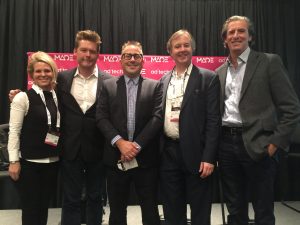
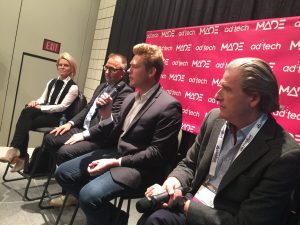 Tom Goodwin discusses agency expectations for AI
Tom Goodwin discusses agency expectations for AI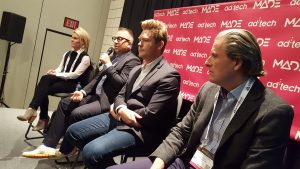 Jason Jercinovic discusses the cognitive era of producing
Jason Jercinovic discusses the cognitive era of producing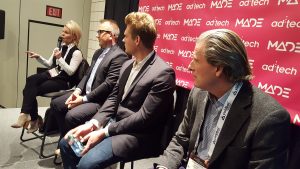 Cindy Pound discuses the chatbot phenomenon
Cindy Pound discuses the chatbot phenomenon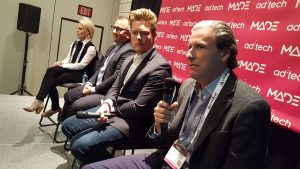 Raoul Didisheim discusses the luxury sector
Raoul Didisheim discusses the luxury sector 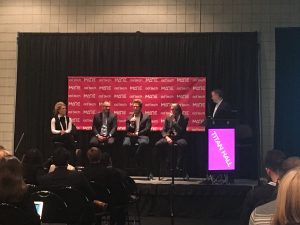 A view from the audience.
A view from the audience.